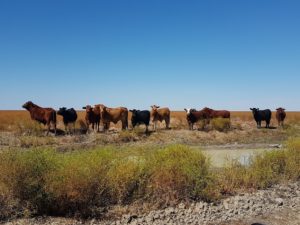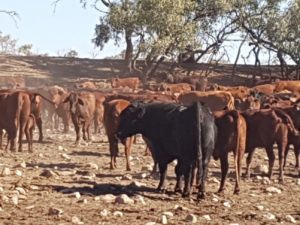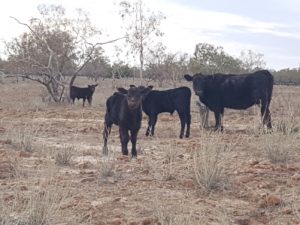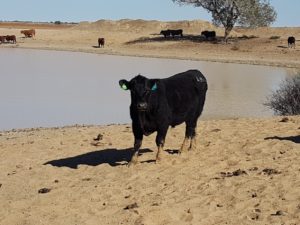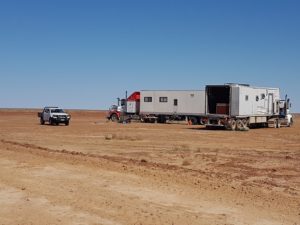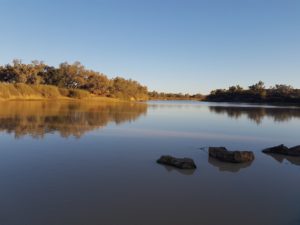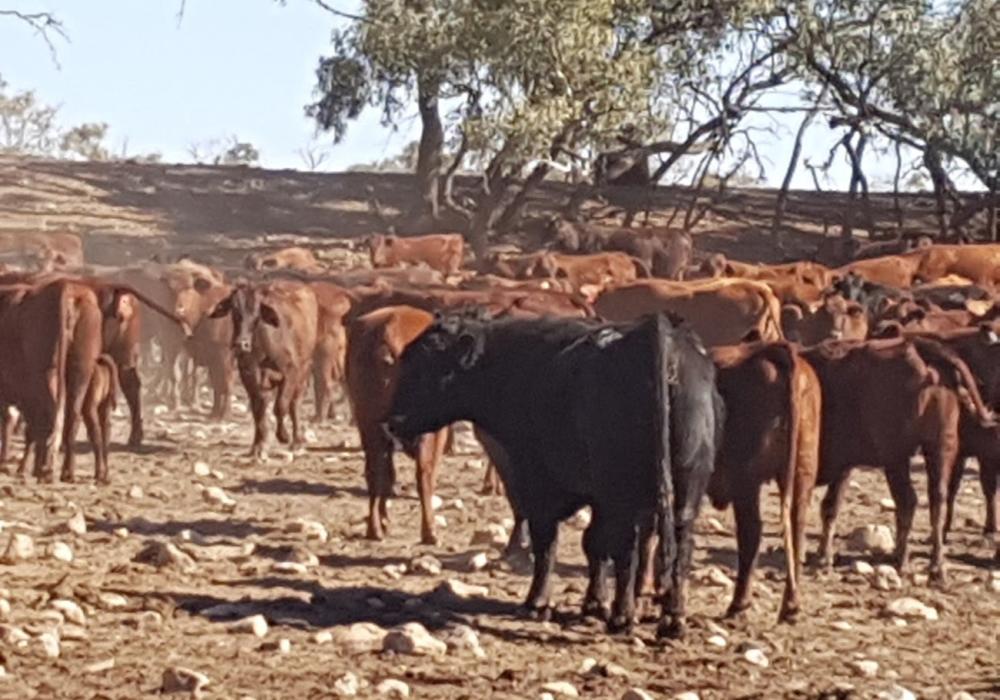On our recent trip to SW Queensland and the most northern parts of South Australia, it was great to see Te Mania Angus bulls so well settled in their new environment, running with station cows which included Droughtmasters, Santa Gertrudis, Brahmans amongst other British breeds. It seemed that in the channel country, as long as there was water, shade and good management, Angus bulls were thriving in the conditions, and bringing with them an opening to new market opportunities.
Station-life seems idyllic, and the large expanses of pristine land, suit it perfectly to organic farming. At this time of year, the station team spends weeks out on stock camps, sleeping under the stars, with vistas of red dirt and salt bush running to the distant horizon. The stockmen and women work hard and are bonded by the mustering teamwork, and the remoteness from their homes – some from regional Australia, others from cities, and from overseas.
Mustering is done on horseback and motor-bikes, and is often assisted by a helicopter for spotting wayward cattle in the bush. Young male weaners missed at marking time, grow into unwanted “mickey bulls”, so careful attention is paid to bringing in as many cattle as possible from the paddocks, up to 2,000 sq km in size.
Wild animals include dingoes, pigs, kangaroos and camels. In accordance with the law of the jungle, the dingoes keep the kangaroo numbers in check, but the camels are most detrimental because when cornered, they trample the fencing. The station workers weren’t phased by the large brown snakes we came across.
Much of the cattle-life and wild-life is centred around the water holes, coming from the vital rivers, and dams which are fed from artesian bores. The bore water comes out of the ground at around 95oC, and is run into a cooling pond, then piped to strategic dams. The birdlife is spectacular, in particular the brolgas.
The distances travelled and scale of the operations are enormous, so road trains were a common sight, sometimes moving cattle within the farm, say from the breeding block to the fattening block after weaning.
There are two major musters each year, when cattle ready for market are drafted and traded. The Angus bulls are allowing the stations to wean progeny earlier, with increased numbers meeting specifications in both organic and non-organic markets. Angus cross females are valuable replacement breeding stock, improving the genetic base of the herds.
The brief time in the outback was very beautiful, as were all the people we met. It was very rewarding to see the Te Mania Angus bulls bred in the southern parts of the country, thriving in arid climes, 2,000kms north of home base.
